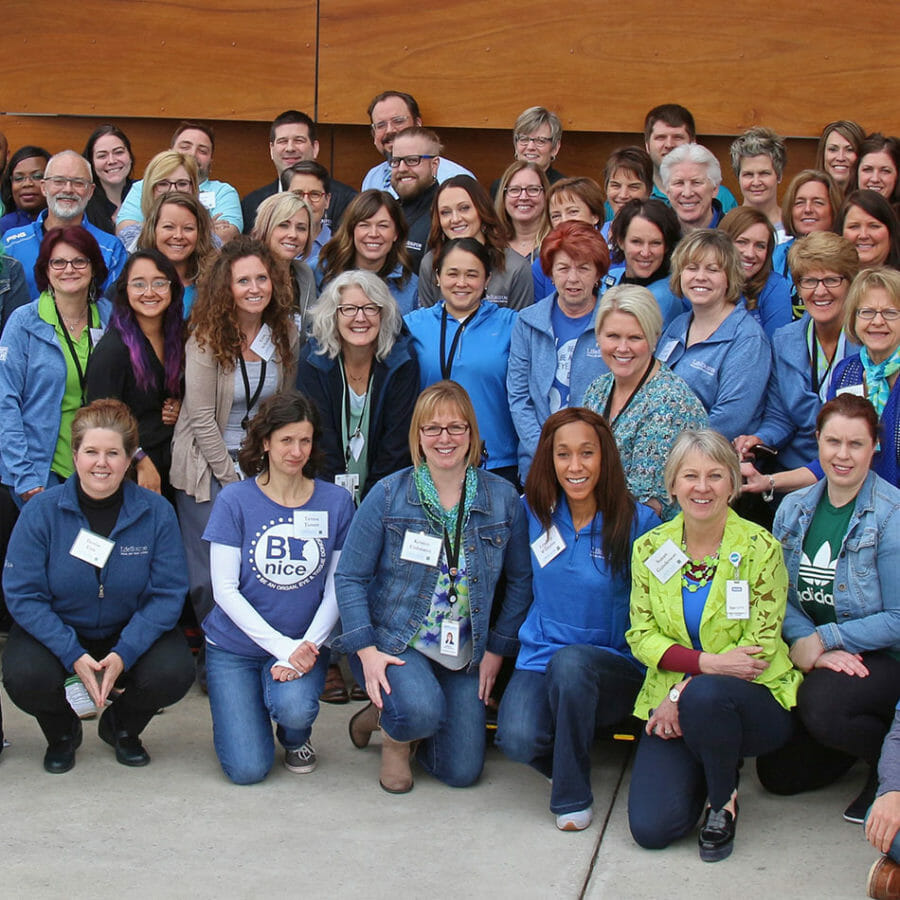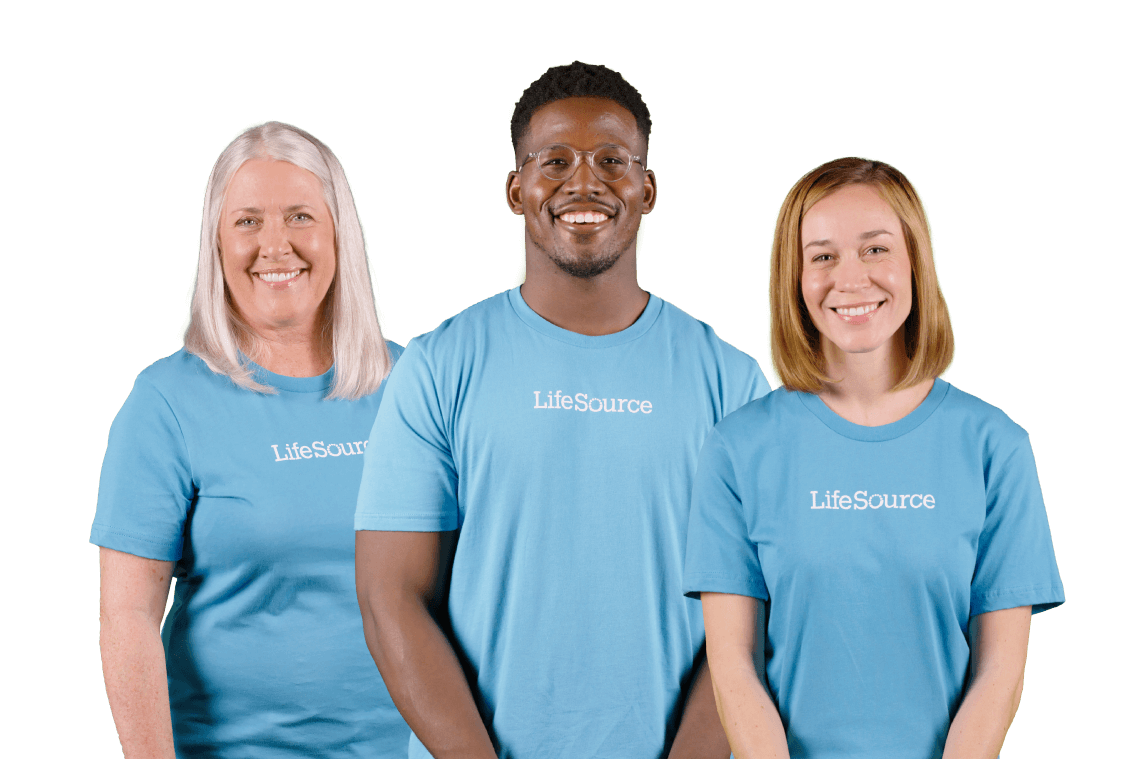FAQs for Families Considering Donation
Thank you for considering organ, eye and tissue donation. Here you can find more information, learn about the impact and explore stories about how saying yes to donation can help save and heal lives today and in the future.
About donation
There are two types of donation: living and deceased. Living donation is when a person donates a kidney, part of their liver, lung, intestine or pancreas to another person while they are alive.
The choice you’re considering is for deceased donation, or donation after death. This is when a person has the rare ability to donate their organs, eyes and tissues to save and heal lives after their death. Fewer than 1% of people have this powerful opportunity because of the strict medical criteria that must be met for donation to happen.
Through organ donation, one person can save up to eight lives. After death, the following organs can be gifted to people in need: heart, lung (2), kidneys (2), liver, pancreas and intestine.
Donated tissues are a powerful way to help and heal people in a variety of meaningful ways, from everyday injuries, to disease management, to helping people get to the point when they can receive a transplant. Tissue transplants are prepared and available for people in need for up to five years following donation. Eye donation most often helps people regain sight through cornea transplant; a cornea that is injured or damaged by disease can become swollen or scarred which can cause blurry vision.
For example:
- Surgical usages for musculoskeletal tissue range from replacing or reconstructing tissue destroyed by tumors or trauma to a dental implant.
- Sport injuries such as tendon ruptures, broken bones or rotator cuff injuries commonly rely on donor tissue for repair.
- Heart valve replacement allows the heart to function again; valves transplanted in young patients will actually grow with them as they get older.
- Veins and arteries help patients suffering from diabetes or other diseases that cause a decrease in blood flow.
- Skin is used to treat burns, repair cleft palates and complete mastectomy reconstruction.
- Corneas restore vision, reduce pain and improve the appearance of unhealthy cornea.
Learn how the donation process works
From start to finish, LifeSource is the medical and support team that will be here for you every step of the way. We work with our partners at the hospital, transplant centers, funeral homes and in the community to make the process as easy as possible and ensure you get the care and support you need.
Find more answers so you can make the decision that’s right for you
Here are some additional questions we’re frequently asked by people in similar situations considering donation. Still have questions? Just let us know and we’ll be happy to provide more resources and answer your specific questions.
More than 100,000 people are waiting for a life-saving transplant right now, including 2,700 in our area, and 17 people die each day simply because there aren’t enough organs for everyone who needs a transplant.
One person can save and heal more than 75 lives through organ, eye and tissue donation. It’s an incredible gift that helps not only the recipients themselves, but their families, friends and community.
One of the best parts about saying yes to donation, according to the majority of donor families, is how their loved one’s donation gave them some comfort in their grief and created new meaning from their loss.
All major religions in the United States support organ, eye and tissue donation and consider it a generous act of caring. Here’s a list of the major religions practiced in the United States and their position on donation. If you still have questions or would like to talk this over, we can connect you with a chaplain at the hospital.
It starts when a person experiencing organ failure, typically due to disease or injury, schedules an appointment at a transplant hospital in their area for an evaluation that determines if a person is a candidate for transplant. If the person is a candidate for transplant, the transplant hospital adds them to the national Organ Procurement and Transplant Network (OPTN) waiting list. This national database contains the names and relevant medical information of all patients in the US waiting for a transplant. The information about each patient includes their blood type, body size, how sick they are, their location, the organ they are waiting for, tissue type, and time on the waitlist. Once a potential recipient’s information is added to the OPTN list, the wait begins.
Once there’s a potential organ donor, medically relevant information about the donor is entered into the OPTN system to start the process of identifying a match for each of the gifts the donor is able to give. Donor information entered into the system includes things like: blood type, body size, geographic location, the life-saving gifts they are able to give and tissue type.
Once this information is entered into OPTN, the system identifies matches for each organ. Often when people think about the waitlist they imagine a ladder, but the list is more of a pool that becomes a pyramid as the best candidate for each available organ is identified. Within the candidate pool, each donor has a list of potential recipients based on medical factors (blood type, organ size, tissue type, etc.).
The best matched patients on the waitlist are contacted by their transplant teams. They go through an assessment over the phone to ensure they are healthy enough to go through the transplant operation and able to be at the hospital for their procedure when needed. If they are healthy and able to be transplanted, they’ll head to the transplant hospital for their procedure. If not, the next best match is contacted until a recipient who is healthy and available is identified.
Making a decision for donation on someone else’s behalf may leave you wondering what they would have wanted. While more than 90% of Americans support organ donation, 40% have not documented their decision – leaving it up to another person to be the legal decision maker for them. Families approach this decision in many different ways – some consider their values and reflect on the type of person their loved one was, or find comfort in finding a new meaning in donation as they say goodbye. For example, some people ask themselves: was this person generous and would they want to help others if given the chance? These are some of the considerations others in your place have shared as they arrived at this powerful decision. Regardless of the individual circumstance and your relationship with this person, statistics show that most people who say yes to donation don’t regret their decision to give another person a second chance at life.
Make a decision based in facts.
There are many questions and myths around organ, eye and tissue donation. The short videos below will give you the facts. It’s important to know that regardless of age, race, religion, or previous health conditions your loved one can still share the gift of life based on their unique indicators and the potential for a life-saving match with somebody on the waiting list.
Am I healthy enough to be a donor?
Does race play a role in organ, eye or tissue donation?
Which religions support organ, eye and tissue donation?
Am I too old to be a donor?
Celebrate your loved one’s legacy
If you say yes to donation, you will receive support from LifeSource in the months and years to come as you begin your grief and healing journey. We’ll share resources, invitations to remembrance events and opportunities to connect with other grieving families whose loved ones gave the gift of life. We also provide opportunities to recognize and pay tribute to the gifts of donation, which you can explore below:
Who we are
At LifeSource, we’re a passionate and committed team of first responders who specialize in the process of organ donation. Our role is to ensure that transplants reach waiting recipients, that donor families and close ones are supported, and provide information to people in communities across the upper Midwest about the power of being a registered donor.
Our team works with nearly 300 hospitals and 9 regional transplant centers in our three-state service area to ensure every donor and family that wants to donate one’s organs, eyes and tissues has the opportunity to do so.


We’re here to help
Your donation liaison can answer any questions you may have and is here to support you along the way. To talk with them, refer to the card they gave you with their phone number or reach out to your nurse.
 Skip to main content
Skip to main content
